Plastics that break down in the environment could be the answer to our pollution worries, Aisling Irwin finds – but only if they are useful in the first place
For Helen Toogood it began with a pot of mint; for Brad LaPray it was potato peelings; Gadi Rothenberg used the laboratory staples citric acid and glycerol – plus a silicone muffin baking tray.
Their tactics have ranged from synthetic biology to test-tube chemistry, but the three share a common goal – they are all working at the cutting edge of the battle against plastic pollution by inventing new biodegradable plastics.
Chemists have been searching for materials that can do the same jobs as conventional plastics, but fade harmlessly into the environment when their work is done. Moved by disturbing images of plastic-choked animals and heavily polluted rivers and beaches, they have produced a profusion of new substances – yarn from seaweed, felt from milk, wood transformed into fleece linings, and microbes adapted to turn waste streams into biopolymers.
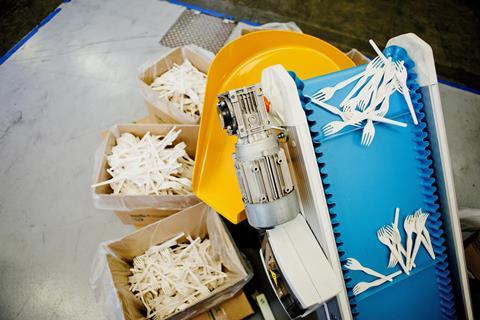
Many of these products are still in the lab. Some, such as edible water sachets made from seaweed, are on the market fighting for a niche. A few, such as Mater-Bi bags and cutlery, are already mainstream. But can biodegradable plastic ever command more than its less than 0.5% sliver of the plastic market, which stands at over 300 million tonnes produced each year? Could biodegradable plastics make the dream of clean hedgerows and healthy sea turtle stomachs a reality? The answer is complex, confusing and contentious.
‘It’s really controversial – I mean, it’s a hornet’s nest,’ says Roland Geyer, an environmental scientist at the University of California at Santa Barbara in the US. Geyer is the man behind one of the most cited plastic statistics – that we have so far produced over eight billion tonnes of plastic of which most is still in use, landfill or simply littered.
While solutions to the problem of plastic pollution are debated up and down the production and disposal chain, the idea of making plastics biodegradable seems to remain in the shadows. Confusingly for the public, biobased plastics attract more publicity than biodegradable plastics and the two are often conflated. Biobased plastics are generally identical to their conventional counterparts, but made from crops and biological feedstocks rather than fossil fuels. CocaCola’s PlantBottle, for example, is made from around 30% plant-based PET (polyethylene terephthalate). Lego is switching to plant sources for 1–2% of its pieces.
But these products will not degrade softly on a beach – they are as non-degradable as their fossil-fuel-derived analogues. On the other hand, biodegradable plastics – mostly made from biomass but also from fossil fuels – receive less attention. This is despite the fact that scientists calculated a decade ago that biodegradable plastics could substitute for as much as 31% of plastic.
Hard to digest
Plastics are formidably resistant to breakdown. Their hydrocarbon chains have few or no functional groups for bacterial enzymes to latch onto. In addition, their semicrystalline structures and the cross-linking between chains present bugs with an impenetrable forest, meaning that even plastics that do contain oxygen groups, such as polyesters, are protected.

Biodegradable plastics, in contrast, tend to have smaller chain lengths and be peppered with oxygen or nitrogen groups. Currently, there are three main categories of biodegradable plastic: polylactic acid (PLA), polyhydroxyalkanoates (PHAs) and thermoplastic starches (TPS). PLA is cheap to produce – generally by the fermentation of biomass to produce lactic acid – but slow to degrade. Though poor in impact strength, barrier and thermal properties, it forms over a fifth of the biodegradable plastic market, supplying medical implants, packaging and many other applications. There are about 150 types of PHAs, and they degrade beautifully – in water and seawater. They are expensive to produce but there is excitement about their potential, and their market size is predicted to grow from the tiny contribution they make today. Meanwhile some of nature’s own polymers – starches or polysaccharides – can be mixed with plasticisers like water or glycerol to make thermoplastic starches, blends of which make up nearly half of the biodegradable market. Overall, biodegradables are overwhelmingly used for bags (68%) with packaging close behind (21%).
On the forefront, new plastics are emerging and hopes lie with mint for Toogood, a biochemist working in the lab of enzymologist Nigel Scrutton at the University of Manchester in the UK. ‘Initially we had a few pots on the windowsill,’ she says. Now, however, microorganisms have taken over production.
In common with a number of other labs, the group is pushing synthetic biology to find interesting polymers. They have followed the metabolic journey of limonene as it transforms into peppermint or spearmint. Along the way they have isolated different monoterpenoids, and engineered microorganisms to insert oxygen into their carbon rings to make lactones. These are sufficiently reactive to be opened up chemically to form biopolymers.
The resulting polycaprolactones are thermoplastic elastomers, flexible and strong, with potential applications in dentistry and medicine as well as flexible electronics. ‘We’re effectively mining metabolic pathways,’ says Toogood. ‘We’ve been able to take out different compounds and potentially make a whole series of new polymers that no-one’s actually looked at.’
A smashing idea
Breaking reactor vessels along with barriers, Gadi Rothenberg, a specialist in catalysis and sustainable chemistry at the University of Amsterdam in the Netherlands, claims to have done the impossible and invented a cheap, biodegradable thermosetting polymer (the abundant cross-linking in thermoset polymers generally makes biodegradation impossible).
He did this by accident in 2010, with his colleague Albert Alberts, mixing citric acid and glycerol to create a solid foam which stuck remorselessly to its glass reactor vessel and broke it when cooled. This compound, now known as Plantics-GX, can replace polyurethane and other foams – cheap materials used in the packaging, construction and isolation sectors but which pose a great environmental burden at disposal because of the harmful compounds they contain, according to Rothernberg.

When immersed in water or humid soil, Plantics-GX foam swells up and hydrolyses back to glycerol and citric acid, a process that can take days or years depending on the degree of polymerisation. Eight years after his discovery, Rothenberg seems chastened by the difficulties of scaling up the chemistry and of breaking into the conservative plastics industry. ’I see now that the main hurdle we face is financial in the sense that if you want to go large you need to have financial guarantees because you are not yet selling the product,’ he says. ‘That is still very hard to find – there are very few actual risk investments in the field of chemistry… it’s very traditional.’
One way into the market has been to capitalise not so much on Plantics-GX’s biodegradability but on its non-toxic promise – replacing materials that consumers would like to avoid because of fears they release potentially dangerous gases. ‘We’re now working with companies that want non-toxic materials in their products – [they want] something that they can guarantee has no formaldehyde, for example,’ he says .
His company, Plantics, is also now making biodegradable plant pots to replace those made of polyethylene and polypropylene. ‘You can put them in the ground with your plant – in a few months they go away,’ he says.
It’s impossible to replace polyester and polyamide completely with natural fibres
In comparison with the superlative performance and variety of conventional plastics, some find it hard to imagine that biodegradables could ever be a match. Conventional plastics are widely used for a reason, points out Leela Dilkes-Hoffman, a chemical engineer at the University of Queensland in Australia. They are light, mouldable, and you can make them as tough or flexible as desired; you can colour them, make them transparent or water resistant. Biodegradable plastics will need to match all of these properties. Your takeaway meal would melt a polycaprolactone plate, adds Adriaan Luyt, a polymer chemist at Qatar University. And no biodegradable plastic has the barrier properties demanded of a fizzy drinks bottle
‘So far, to be quite frank, it’s impossible to replace polyester and polyamide completely with natural fibres,’ says Hilke Patzwall, corporate social responsibility manager of Vaude, a German manufacturer of outdoor clothing. Vaude prides itself on its green credentials but a hiking jacket needs to be durable, easy to wash, abrasion-resistant, breathable, waterproof, packable and odour-protected, she says. It’s self-evidently hard to marry the properties that make a jacket stand up to the elements to later being able to degrade in the same conditions.
Nevertheless Vaude has been experimenting. The fluffy interiors of some of its fleeces, normally of brushed polyester, are now made of lyocell, a marine-biodegradable, wood-derived product manufactured by the Austrian firm Lenzing. The as-yet unproven idea, explains Patzwall, is that the fluffy side of a fleece is a particularly prolific shedder of microfibres, the tiny particles of textiles that have recently been discovered to be escaping into the environment in vast quantities. Vaude is also using QMilk fibre, derived from milk protein, as a felt and insulation material. ‘The problem with QMilk is that if you try to weave or knit it into a fabric it won’t – it’s just not stable enough,’ says Patzwall – though its inventor is working on it, she adds.
Biodegradable blend
Given the obstacles, couldn’t ordinary plastics be tweaked to become biodegradable? There are some reports of microorganisms degrading conventional plastics but their activity is low, say experts. Some companies advertise additives, often metal salts, that confer biodegradability to plastics. In reality, says Dilkes-Hoffman, they generally cause the plastics to fragment but not biodegrade, leaving an abundance of microplastics in the environment.
Another option could be to blend conventional plastics with starches and other biodegradable plastics. ‘There are lots of people claiming that if you mix polyethylene, for example, with natural fibre you create a biodegradable polymer, which I think is definitely not true,’ says Luyt. ‘You may make the polymer slightly more accessible to microorganisms but they will first attack the natural substance and maybe shorten the lifetime of the polymer.’

One company that claims to have created blends that avoid that fate is BioLogiQ, in the US state of Idaho. Founder Brad LaPray wanted to put the waste starch from his native state’s potato farms to use, and found a way of processing it to make a thermoplastic starch known as NuPlastiQ GP. This plastic is unusual, he says, because of a proprietary process that removes water from the starch (replacing it with a plasticiser) and inhibits its return. The resin on its own is certified marine-biodegradable . It can be blended with other biodegradable plastics and can also improve the properties of conventional plastics. But the company has also demonstrated complete, or near-complete, biodegradation for some of those conventional–Nuplastiq blends. For example, a cup made of a blend of Nuplastiq GP and 80% polypropylene took about eight months to 95% decompose in an anaerobic digester supposed to simulate landfill conditions.
Both Luyt and Dilkes-Hoffman are sceptical about these claims, having come across so many before that have conflated fragmentation with true biodegradation. But LaPray points out that the blends have passed standard, third-party tests. The magic, he says, is all down to the way they have converted the large hydrophilic starch particles into small amorphous hydrophobic ones, which then bond with their partner conventional plastics in a unique way. In a conducive environment, microorganisms can find landing places, and ’doors that are easily opened’ in the amorphous regions of the blend – and keep going till they have consumed all of the carbon.
Surprisingly, despite Nuplastiq’s certification successes, LaPray has numerous criticisms of the standards – broadly because the conditions under which plastics are certified often don’t reflect the realities of the end of life.
No easy answers
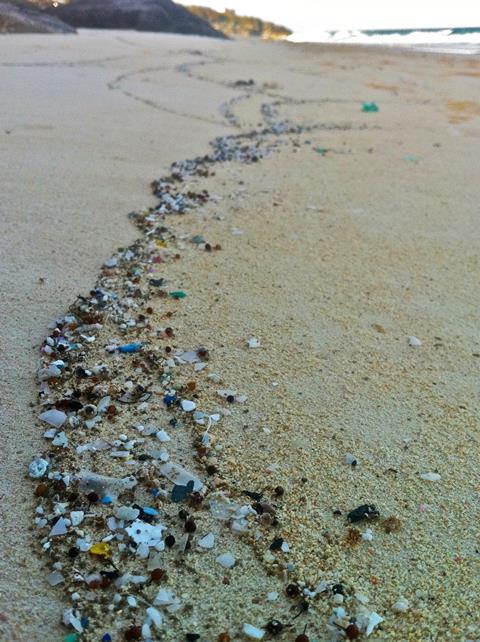
His views are echoed in unexpected quarters. Marcus Eriksen is a scientist and veteran marine plastics campaigner. His organisation, 5Gyres, published in 2018 the (non-peer reviewed) results of tests in which they submerged in the ocean a collection of nappies, dog poop bags, cutlery disposable cups and the like, all of which carried varying claims to biodegradability. They buried a similar collection in garden soil. Two years later, some items had faded away, but most had not. Eriksen’s point is that few products harmlessly decay in the ocean, which is cold, salty and mostly dark, or in ordinary soil. Most of the products did not make claims to that precise type of biodegradability but that is not his message: he wanted to demonstrate that the current generation of biodegradable plastics do not remedy the problem of plastic leakage into the environment.
This raises the question of what people want biodegradable plastics to achieve and how they would be managed if they entered the mainstream. So far, most biodegradable plastics require very specific conditions to degrade; for example, the high temperatures of industrial composters. These requirements vary from polymer to polymer, which means a complex set of end-of-life requirements, with many potentially ending up in the wrong destination, contaminating waste streams.
Ed Kosior is an expert in polymer engineering and managing director of Nextek in the UK, which specialises in recycling innovations. ‘People say “Let’s make a lot of packaging degradable”,’ he says. ‘So the question that follows that is “Where will they degrade?” Are we taking them to a site where we’re going to degrade them all? Or are we going to let them lie in the ground? [It] will still mean collection and we still have to process them to make them degrade. And we get nothing at the end, only carbon dioxide and water. And that’s why recycling is a better option.’
This incenses some. Tony Breton, market specialist at the Italian biochemical companyNovamont, points out that when biodegradable plastics merge with the soil they often carry with them food waste (and, in the case of agricultural mulches, a lot of soil itself) that would otherwise have gone to landfill. This enriches soil but generally goes undocumented.
None of the current biodegradable materials answer the challenge
What’s more, biodegradable plastics are already functioning well in closed systems, Breton adds. Novamont’s Mater-Bi fast food utensils are used at sports events and festivals, and discarded in special bins along with the food waste to be sent for composting together.
There are two competing versions of the circular economy here, observes Tom Domen, global head of long term innovation at the UK cleaning product company Ecover. There is the ‘technical’ cycle and the ‘biological’ cycle – one supporting recycling and the other biodegradation. In reality, there are roles for both, he says.
Dilkes-Hoffman agrees, seeing a role for marine-biodegradable plastics in sectors where there is a high risk of plastic leakage or where recycling is unlikely because of contamination. This would include small plastic pieces such as sachets, fast food containers, nappies and sanitary products, coffee pods and fishing gear.
It turns out that the idea of biodegradable plastics is alluring but they present problems – not just in matching the performance of conventional plastics but in finding graceful end-of-life solutions that siphon them into the circular economy. The waste will have to be carefully managed – the same as conventional plastic waste.
Meanwhile, supporters of the biological cycle are waiting for the perfect biodegradable plastics, says Domen. ‘We’re looking for that material which is nature-benign, which would mean that anywhere that material ends up, whether it is forests or oceans or backyards, it should be consumed by the local ecosystem,’ he explains. ‘And none of the current biodegradable materials answer that challenge.’
Aisling Irwin is a science writer based in Oxfordshire, UK
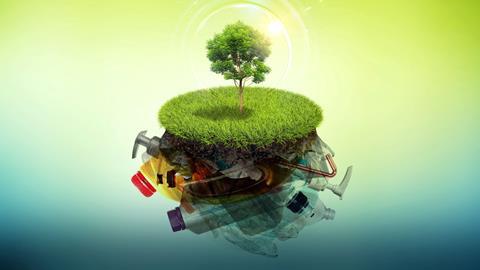
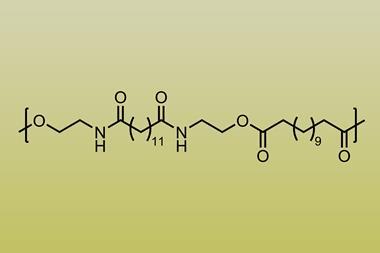
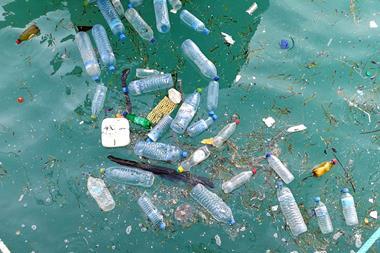










No comments yet